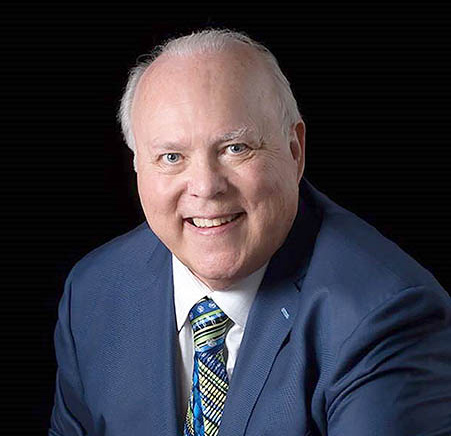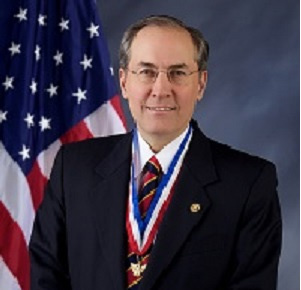Personal Health and the Annual Health and Medical Record
Find the current Annual Health and Medical Record (AHMR) at www.scouting.org/health-and-safety/ahmr.
The Scouting adventure, camping trips, high-adventure excursions, and having fun are important to everyone in Scouting—and so are your safety and well-being. Completing the Annual Health and Medical Record is the first step in making sure you have a great Scouting experience. So what do you need?
All Scouting Events
All participants in all Scouting activities complete Part A and Part B. Give the completed forms to your unit leader. This applies to all activities, day camps, local tours, and weekend camping trips less than 72 hours. Update at least annually.
Part A is an informed consent, release agreement, and authorization that needs to be signed by every participant (or a parent and/or legal guardian for all youth under 18).
Part B is general information and a health history.
Going to Camp?
A pre-participation physical is needed for long-term camps or for a Scouting event of more than 72 hours, such as Wood Badge and NYLT. The exam needs to be completed by a certified and licensed physician (MD, DO), nurse practitioner, or physician assistant. If your camp has provided you with any supplemental risk information, or if your plans include attending one of the four national high-adventure bases, share the venue’s risk advisory with your medical provider when you are having your physical exam.
Part C is your pre-participation physical certification.
Planning a High-Adventure Trip?
Each of the four national high-adventure bases has provided a supplemental risk advisory that explains in greater detail some of the risks inherent in that program. All high-adventure participants must read and share this information with their medical providers during their pre-participation physicals. Additional information regarding high-adventure activities may be obtained directly from the venue or your local council.
Prescription Medication
Taking prescription medication is the responsibility of the individual taking the medication and/or that individual’s parent or guardian. A leader, after obtaining all the necessary information, can agree to accept the responsibility of making sure a youth takes the necessary medication at the appropriate time, but the BSA does not mandate or necessarily encourage the leader to do so.
Standards and policies regarding administration of medication may be in place at BSA camps. If state laws are more limiting than camp policies, they must be followed. The AHMR also allows for a parent or guardian to authorize the administration of nonprescription medication to a youth by a camp health officer or unit leader, including any noted exceptions.
Risk Factors
Scouting activities can be physically and mentally demanding. Listed below are some of the risk factors that have been known to become issues during outdoor adventures.
- Excessive body weight (obesity)
- Cardiac or cardiovascular disease
- Hypertension (high blood pressure)
- Diabetes mellitus
- Seizures
- Asthma
- Sleep apnea
- Allergies or anaphylaxis
- Musculoskeletal injuries
- Psychological and emotional difficulties
More in-depth information about risk factors can be found by using this QR code or by visiting www.scouting.org/health-and-safety/risk-factors.
Questions?
Q. Why does the BSA require all participants to have an Annual Health and Medical Record?
A. The AHMR serves many purposes. Completing a health history promotes health awareness, collects necessary data, and provides medical professionals critical information needed to treat a patient in the event of an illness or injury. It also provides emergency contact information.
Poor health and/or lack of awareness of risk factors have led to disabling injuries, illnesses, and even fatalities. Because we care about our participants’ health and safety, the Boy Scouts of America has produced and required the use of standardized health and medical information since at least the 1930s.
The medical record is used to prepare for high-adventure activities and increased physical activity. In some cases, it is used to review participants’ readiness for gatherings like the national Scout jamboree and other specialized activities.
Because many states regulate the camping industry, this Annual Health and Medical Record also serves as a tool that enables councils to operate day and resident camps and adhere to state and BSA requirements. The Boy Scouts of America Annual Health and Medical Record provides a standardized mechanism that can be used by members in all 50 states.
For answers to more questions, visit the FAQ page at www.scouting.org/health-and-safety/ahmr/medical-formfaqs/.
Medication Use in Scouting
With an increasing number of youth taking prescription medication, leaders need some basic tools and guidance to help them Be Prepared to support youth in the safe use of their medication. The BSA understands that a leader, regardless of how diligent they may be, may not know or understand every health-related issue of the youth members in their unit. Remember that the taking of prescription medication is the responsibility of the individual taking the medication or that individual’s parent or guardian.
Good planning, preparedness, and having some knowledge about handling a youth member’s medication is essential in keeping youth safe and healthy. The Medication Use in Scouting guidance is one of those tools, along with the individual’s Annual Health and Medical Record.
This tool is primarily used for outings when medication is or may be needed when a parent or guardian is not present. We encourage you to review the guidance periodically—it has eight basic elements:
- Annual Health and Medical Record
- Plan
- Supervision of medication administration
- Labeling
- Storage
- Emergency medication
- Nonprescription (OTC) medications
- Accountability
References: www.scouting.org/filestore/HealthSafety/pdf/SAFE_USE_OF_MEDICATION_IN_SCOUTING.pdf and www.scouting.org/health-and-safety/guidelines-policies
Immunizations
The Boy Scouts of America encourages all members of the Scouting community to use available vaccines to fully protect themselves from infectious diseases that are dangerous for children and adults living in the United States. Participants who are not immunized are subject to identification so that they may be located in case of a necessity for isolation or quarantine as required by local public health official directives. Based on risk, a valid (within last 10 years) tetanus immunization is required to participate. State or local requirements for resident camping may be more restrictive.
Local Council Membership/Participation Guidelines Regarding Life-Threatening Communicable Diseases
The BSA policy regarding communicable diseases (acute or chronic) is as follows:
Local Scouting units and their chartered organizations traditionally determine their own membership and participation, absent any legal constraints. Accordingly, units and chartered organizations allow youth or adult members who have, or are suspected of having, a communicable disease to continue to participate in Scouting activities.
The chartered organization and/or a local Scouting unit may request local council assistance if needed, absent any legal restraints. (See Local Council Membership/Participation Guidelines Regarding Communicable Diseases)
First Aid and CPR Training
First aid is the first help given to someone who has had an accident or other health emergency. If more attention is needed, first-aid treatment helps keep an injured or ill person as safe as possible until medical personnel arrive. Wilderness first aid (WFA) is the assessment of and treatment given to an ill or injured person in a remote environment when a physician and/or rapid transport are not readily available.
First aid and WFA are important to participants in BSA programs. The BSA strongly recommends that participants avail themselves of CPR with automatic external defibrillator (AED) training, along with first-aid and wilderness first-aid training. For certain program participation, there may be requirements for first aid, wilderness first aid, and CPR/AED. There are no unit-centric requirements at this time.
First aid, WFA, CPR/AED must be taught by instructors currently trained by a nationally certified provider such as the American Red Cross, American Heart Association, Emergency Care and Safety Institute, or American Safety and Health Institute. Cub Scouts can even be taught this valuable skill in a family-type setting. Online-only courses are not accepted if a certification is required. The BSA will accept nationally recognized blended courses—such as from the American Heart Association, American Red Cross, Emergency Care and Safety Institute—where competency can be demonstrated to an instructor.
Further information and advancement in first aid may include wilderness first responder (WFR) and wilderness emergency medical technician (WEMT).
For more information, see the Scouts BSA handbooks and the First Aid merit badge pamphlet.
Wilderness First Aid (WFA)
Wilderness first aid (www.scouting.org/health-and-safety/training/wilderness-fa), the next step up from basic first aid, focuses on teaching assessment skills and using available resources when professional responders might be hours or even days away. A BSA-led task force has developed a specific BSA WFA curriculum and doctrine. WFA certification courses must adhere to BSA requirements and include both didactic and hands-on scenario-based practice academic text.
Two members of each crew participating in a trek at Philmont Scout Ranch or one crew member at all other high-adventure bases operated by the BSA are required to have this certification. It is also recommended that troops or Venturing crews participating in any other high adventures, whether through a council or on their own, receive this training. Also, having more people on a high-adventure trek trained in WFA is always beneficial if an emergency does occur.
Being at least 14 years old and completing a CPR and AED certification course led by a nationally recognized provider are the only prerequisites for the 16-hour course. Providers of WFA credentialing meeting BSA’s WFA requirements include the American Red Cross, Emergency Care & Safety Institute, and those accredited by the American Camp Association.


